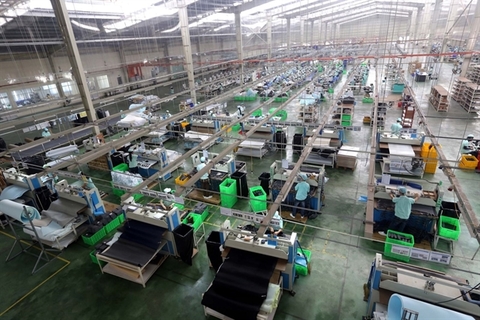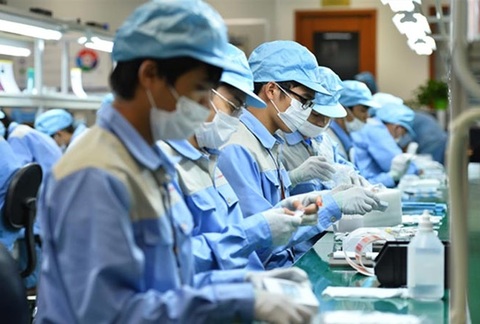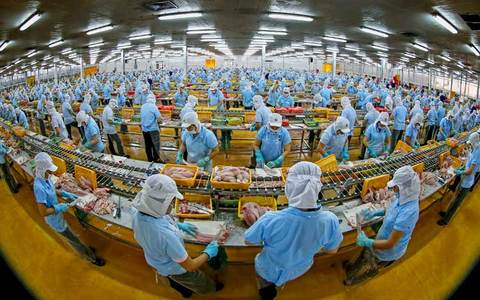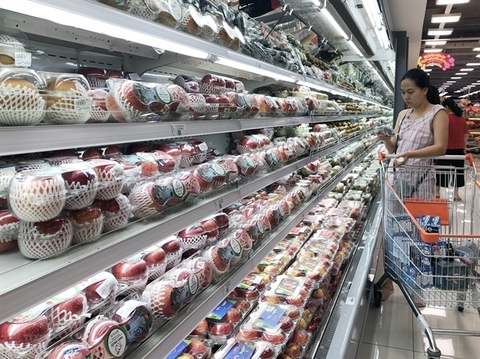Bright spots amid trading tensions
Bright spots amid trading tensions
Stable monetary policy, a network of trade agreements, and suitable policies encouraging foreign direct investment have helped Vietnam maintain stable growth amid trade tensions. Suan Teck Kin, head of research and executive director of Global Economics and Markets Research at United Overseas Bank Singapore, provides an insight into these issues.
Vietnam’s economy expanded 7.1 per cent in 2018, the fastest growth in 11 years. All major sectors recorded notable growth, buoyed by manufacturing, construction, and wholesale and retail, which rose 13, 9.2, and 8.5 per cent on-year, respectively. Tourism also enjoyed a bright outlook with the number of international arrivals surging by 20 per cent on-year. Vietnam’s strong economic growth will continue in 2019, driven by increasing foreign direct investment (FDI) and robust domestic demand.
In the first half of 2019, Vietnam’s economy grew 6.76 per cent on-year, driven by agriculture, forestry, and fishery, but more importantly industry and construction (up 8.9 per cent on-year), and services (up 6.7 per cent on-year) registered strong momentum. Particularly wholesale and retail, transport, communications, banking and finance, education, and healthcare sectors have performed strongly. Exports and industrial production remained significant growth drivers.
Due to solid growth in the export of technological products and various free trade agreements, exports increased 7.3 per cent on-year, while imports jumped 10.5 per cent on-year during the first half of 2019. We are projecting Vietnam’s GDP growth at 6.7 per cent, in line with official growth target of 6.8 per cent for 2019, which will rank Vietnam as one of the fastest-growing economies in the world.
In terms of monetary policy, the State Bank of Vietnam is expected to maintain its refinancing rate at 6.25 per cent throughout the remainder of 2019. With the current policy rate, the monetary policy stance is conducive to business activities, while preserving price stability. The preservation of policy space is important given external uncertainties especially the ongoing US-China trade dispute. The strong economic growth also eases pressure on the central bank to introduce more stimuli to achieve official growth target of 6.8 per cent this year. Going forward, we continue to reiterate a modestly higher USD/VND trajectory, with point forecasts at VND23,400 in the third quarter of 2019 and VND23,600 in the final quarter.
MNCs eyeing relocation
The ongoing US-China trade tensions have caused significant uncertainties in global trade, pushing companies to look for alternative production locations.
Vietnam, with its strategic location is one such country for the world’s export production activities. For land transport, Vietnam benefits from bordering Laos, Cambodia, and especially China. As for sea transport, eastern Vietnam is a coastal area with three major port cities.
Apart from its geographic proximity to China, one of Vietnam’s comparative advantages in attracting FDI is its relatively low labour cost, especially compared with China and Thailand. The 2019 minimum wage hikes in Vietnam resulted in new monthly minimum wages ranging from $126-180 across different regions. However, Vietnamese minimum wages are still 38 per cent to 54 per cent of those in China, while the minimum wage in Thailand could be 1.5 to two times higher than that of Vietnam.
However, one constraining factor for the country is the relatively large proportion of the labour force engaging in the agriculture sector. This could inhibit the speed of development of its manufacturing sector in the near-to-medium term due to the limited supply of skilled workers, which could result in upward pressures on wages.
Another strength of Vietnam as an export production base is its excellent network of trade agreements. A total of 13 free trade agreements (FTAs) have been signed and another three are under negotiation. This means that Vietnamese exports to significant parts of the world are free from tariffs, offering opportunities for manufacturers relocating to Vietnam to sell to more partners at minimised cost.
Vietnam’s major FTAs include the Comprehensive and Progressive Agreement for Trans-Pacific Partnership (CPTPP) and the EU-Vietnam FTA (EVFTA). The CPTPP aims to eliminate import tariffs on 98 per cent of goods traded among its members, and the trade pact is expected to boost Vietnamese exports and attract multinational corporations (MNCs). The EVFTA, meanwhile, will lead to almost 99 per cent elimination of customs duties between the EU and Vietnam within 10 years.
Recent trends show empirical evidence of increased investment relocation to Vietnam, in response to external uncertainties from the US-China trade tensions.
FDI inflows (based on realised capital) increased 9.1 per cent on-year in 2018, reaching $19.1 billion. For 2019, FDI in Vietnam is on track to likely hit above $20 billion with a 4.7 per cent increase, as MNCs divert some of their operations to bypass higher tariffs resulting from the US-China trade conflicts.
Corresponding to the acceleration in FDI inflows, new foreign-invested project activities launched in Vietnam have also been very encouraging, with 2019 on track to be the best year on record, based on current run rates. In the year to date up to July, Vietnam recorded 2,064 new projects, 25 per cent higher than the same period in 2018, which itself was already a record year with a total of 3,046 projects.
So far in 2019, China has been the major contributor to Vietnam’s FDI, contributing nearly 25 per cent of the flows. This is a reversal from the previous two years, when inflows were dominated by South Korea and Japan, based on registered capital data. This suggests that the impact from US-China trade tensions that arose in the first half of 2018 is having a tangible effect on China-based manufacturers.
From a micro perspective, Vietnam will further attract FDI in high-tech industries thanks to its successful 5G trial programme in May, and smart factories will be among the first segments using this high-speed network. Such a move will help draw FDI to Vietnam, particularly in high-tech industries. At present, Vietnam has three high-tech parks developed as research and development hubs in line with the country’s push towards innovation and value-based growth.
Industry 4.0 for sustainable growth
Over the mid-to-long term, Vietnam is striving for sustainable development that will help to improve growth quality and elevate standards of living. One key platform in this is the Fourth Industrial Revolution.
Vietnam’s Central Institute for Economic Management estimated that the implementation of economic reforms along with Industry 4.0 could increase Vietnam’s GDP by between $28.5 billion and $62.1 billion, equivalent to a GDP growth rate of 7-16 per cent annually, until 2030. In addition, Vietnam’s GDP per capita would increase by $315-640 by 2030, due to improvements in labour productivity and employment. This is a significant increase compared with Vietnam’s per capita GDP of $2,551 in 2018, based on data from the International Monetary Fund.
Vietnam’s top leaders are well aware of the need, challenges, and benefits of Industry 4.0, since the topic received wide media coverage in 2016 at the World Economic Forum in Davos of Switzerland. Subsequent developments suggest that the matter has received attention at the highest levels of the government. At the fourth Plenum of the 12th Party Central Committee in May of that year, Party members received reports and discussed Industry 4.0.
This was followed by Prime Minister Nguyen Xuan Phuc’s keynote speech on the digital revolution at the Vietnam ICT Summit that September.


















